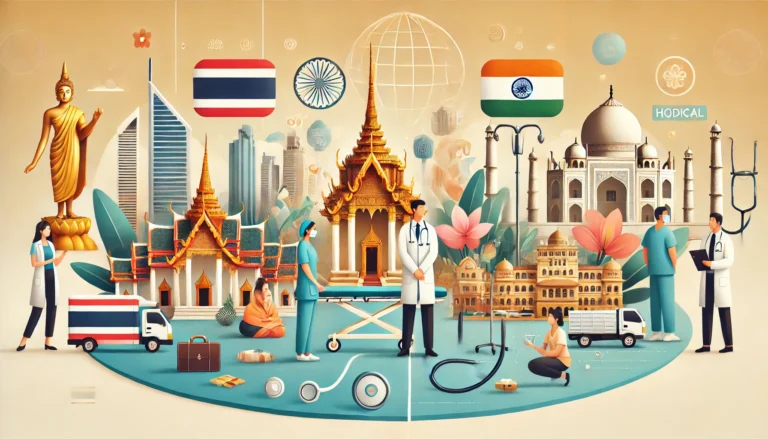
Comparing Healthcare Systems: Thailand vs. India
When comparing the healthcare systems of Thailand and India, several factors come into play, including patient care quality, doctor expertise, hospital facilities, and treatment costs. Both countries have gained global recognition for their healthcare offerings, but their systems cater to different needs and preferences. Here’s a side-by-side comparison to help you better understand the strengths and weaknesses of each.
1. Patient Care Quality
2. Doctor Expertise
Thailand: (+) Thai doctors are highly skilled, many of whom have received training or certifications abroad. The country’s focus on medical tourism has driven investment in continuous training and international collaboration. According to a 2022 survey by the Medical Tourism Association, over 95% of medical tourists rated Thai doctors as “highly competent.”
India: (+) India’s doctors are globally respected for their expertise. With rigorous medical education and exposure to a high patient volume, Indian doctors have extensive experience in handling complex medical cases. For example, Dr. Devi Shetty, a renowned cardiac surgeon, has performed over 15,000 heart surgeries. According to the Indian Medical Tourism Market Report, 2023, Indian doctors are frequently sought for complex procedures, particularly in cardiology and oncology.
3. Hospital Facilities
Thailand: (+) Thailand is home to some of the most modern and luxurious hospitals in Asia. Private hospitals, in particular, are equipped with state-of-the-art technology and offer amenities comparable to five-star hotels. Bumrungrad International, for example, serves over 1.1 million patients annually, with nearly half being international patients.
4. Treatment Costs
5. Accessibility and Wait Times
India: (+/-) India’s private hospitals generally offer prompt services, but public hospitals often suffer from overcrowding and long wait times due to high demand. For example, AIIMS Delhi handles over 3.5 million outpatients annually, leading to significant delays in non-emergency services.

Both Thailand and India excel in different aspects of healthcare, making them popular choices for medical tourists. If luxury and seamless service are priorities, Thailand may be the better option. On the other hand, if affordability and doctor expertise are key considerations, India emerges as a strong contender. Real-world testimonies, such as that of John Davis, an American medical tourist who saved over $20,000 by opting for a hip replacement in India, highlight the cost-effectiveness of Indian healthcare. Ultimately, the choice depends on individual needs, treatment types, and budget constraints.

